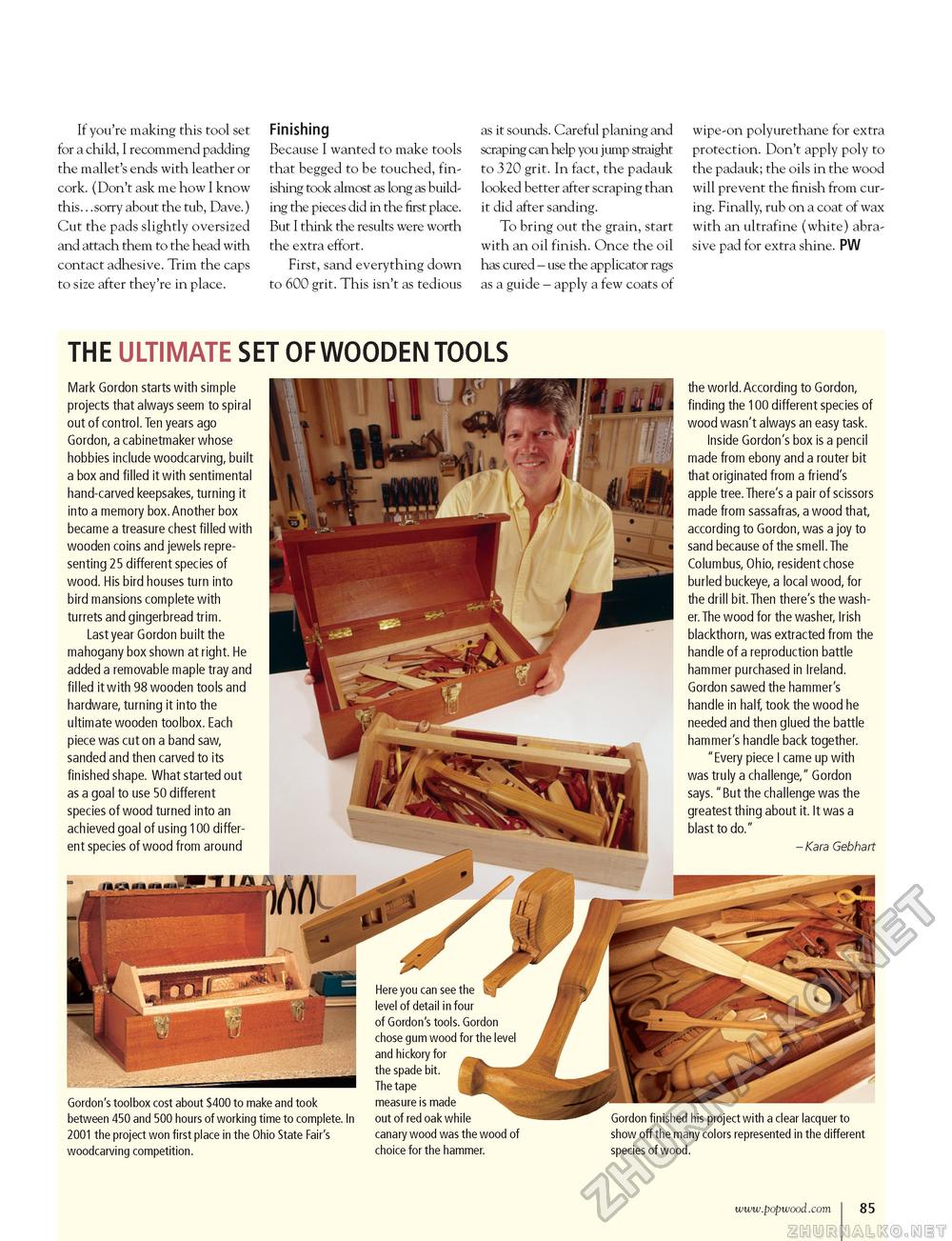Popular Woodworking 2002-12 № 131, страница 79
If you're making this tool set for a child, I recommend padding the mallet's ends with leather or cork. (Don't ask me how I know this.. .sorry about the tub, Dave.) Cut the pads slightly oversized and attach them to the head with contact adhesive. Trim the caps to size after they're in place. Finishing Because I wanted to make tools that begged to be touched, finishing took almost as long as building the pieces did in the first place. But I think the results were worth the extra effort. First, sand everything down to 600 grit. This isn't as tedious as it sounds. Careful planing and scraping can help you jump straight to 320 grit. In fact, the padauk looked better after scraping than it did after sanding. To bring out the grain, start with an oil finish. Once the oil has cured - use the applicator rags as a guide - apply a few coats of wipe-on polyurethane for extra protection. Don't apply poly to the padauk; the oils in the wood will prevent the finish from curing. Finally, rub on a coat of wax with an ultrafine (white) abrasive pad for extra shine. PW THE ULTIMATE SET OF WOODEN TOOLS Mark Gordon starts with simple projects that always seem to spiral out of control. Ten years ago Gordon, a cabinetmaker whose hobbies include woodcarving, built a box and filled it with sentimental hand-carved keepsakes, turning it into a memory box.Another box became a treasure chest filled with wooden coins and jewels representing 25 different species of wood. His bird houses turn into bird mansions complete with turrets and gingerbread trim. Last year Gordon built the mahogany box shown at right. He added a removable maple tray and filled it with 98 wooden tools and hardware, turning it into the ultimate wooden toolbox. Each piece was cut on a band saw, sanded and then carved to its finished shape. What started out as a goal to use 50 different species of wood turned into an achieved goal of using 100 different species of wood from around the world.According to Gordon, finding the 100 different species of wood wasn't always an easy task. Inside Gordon's box is a pencil made from ebony and a router bit that originated from a friend's apple tree. There's a pair of scissors made from sassafras, a wood that, according to Gordon, was a joy to sand because of the smell. The Columbus, Ohio, resident chose burled buckeye, a local wood, for the drill bit. Then there's the washer. The wood for the washer, Irish blackthorn, was extracted from the handle of a reproduction battle hammer purchased in Ireland. Gordon sawed the hammer's handle in half, took the wood he needed and then glued the battle hammer's handle back together. "Every piece I came up with was truly a challenge," Gordon says. "But the challenge was the greatest thing about it. It was a blast to do." - Kara Gebhart Gordon's toolbox cost about $400 to make and took between 450 and 500 hours of working time to complete. In 2001 the project won first place in the Ohio State Fair's woodcarving competition. Here you can seethe level of detail in four of Gordon's tools. Gordon chose gum wood for the level and hickory for the spade bit. The tape measure is made out of red oak while canary wood was the wood of choice for the hammer. Gordon finished his project with a clear lacquer to show off the many colors represented in the different species of wood. 85 |








